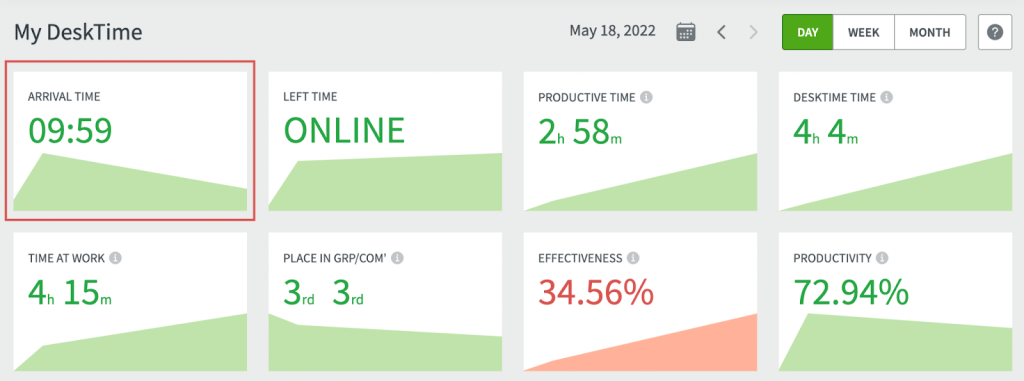Friendly boss: Should managers be friends with employees, and where do you draw the line?

Being a friendly boss certainly has its advantages – for one, strong relationships with your employees can enhance team spirit and grow workplace satisfaction. With 82% of American workers admitting they would quit their job because of a bad manager, being a genuinely good boss is arguably a sound tactic.
On the flip side, being too friendly can interfere with professional matters, lead to concerns about favoritism, and make it harder to make tough decisions. Therefore, it’s all about finding a delicate balance between being approachable and friendly and becoming biased or overstepping boundaries.
Want to get the most out of your time?
Try DeskTime for free!
Try free for 14 days · No credit card required.
By signing up, you agree to our terms and privacy policy.

So, can a manager be friends with their employees?
The short answer is yes.
You guessed it right – there is a “but” coming.
The friendship between a boss and an employee can’t interfere with work matters. Ideally, the relationship can exist outside the workplace, but it can’t affect anyone’s performance or reputation.
The problem is – this is easier said than done.
Knowing where to draw the line between being a friendly boss and maintaining professional boundaries is crucial for effective management. Here are some tips for managers to avoid situations when friendliness becomes counterproductive.

1. Set clear expectations and guidelines
Sometimes, being an ever-friendly boss might lead to misunderstandings about what’s acceptable in the workplace. To avoid this, make sure you clearly communicate expectations regarding work standards, deadlines, and professional conduct.
Sounds easy in theory, but how do you do it in practice? Start by taking these steps:
- Create written guidelines
Develop and share written policies that outline professional conduct, project timelines, and performance expectations. These documents serve as a reference point for employees to understand what’s expected of them.
- Explicitly define expectations
Communicate specific, measurable, achievable, relevant, and time-bound (SMART) goals to your team. Use clear language to outline what is expected regarding work quality, deadlines, and behavior in the workplace.
- Lead by example
Model the behavior and work ethic you expect from your team. By embodying professionalism, meeting deadlines, and maintaining a respectful demeanor, you set a standard for others to follow.
- Schedule regular feedback sessions
Schedule regular one-on-one meetings to discuss progress, provide feedback, and align on expectations. Use these sessions to clarify misunderstandings and ensure everyone is on the same page.
2. Use digital tools to oversee performance and discipline
While being a friendly boss is valuable, it shouldn’t overshadow the need for corrective action when necessary. As a manager, if you notice a decline in an employee’s performance or behavioral issues, it’s essential to address the issue promptly and professionally. If you delay it, it will only get worse and look unprofessional to the rest of the team.
Some issues can even be tackled preventively. For example, by introducing productivity tracking for your employees, you secure yourself against regular employee lateness or low performance. By using such software, you don’t have to be the bad guy noticing less than desired performance of a friendly employee – the software does it for you.
Tools like DeskTime work automatically in the background of your employee’s computer, track the time spent working, and register the apps used. With such software, you gain an objective benchmark for employee evaluation.

3. Stay objective and avoid favoritism
When thinking about whether managers should be friends with employees, we must not forget important considerations like objectivity. Be mindful of any biases that might stem from personal friendships and ensure that all employees have equal opportunities for growth and recognition.
Sounds easy – in theory. But how to stay impartial if one of the parties involved in a conflict is your friend (or if you’ve been a friendly boss to both)?
- Make it clear early on that personal relationships won’t interfere with your role as a manager. Let both parties know that you’ll approach the situation objectively and won’t take sides.
- You can also have a private conversation with your friend involved in the conflict. Explain your position as a manager and encourage them to approach the issue professionally, too.
- Facilitate a discussion between the conflicting parties, encouraging understanding and compromise. Most importantly – act as a mediator, focusing on the issues rather than personal connections.
- Always keep personal information confidential. Avoid discussing details of the conflict with others unless it’s essential for resolution or involves legal or policy considerations.
Finally, after the conflict resolution, follow up to ensure the issue has been resolved satisfactorily and monitor the situation to prevent any lingering tension or recurrence.

Want to keep your employees happy?
Time tracking is a great tool to avoid employee burnout.
4. Maintain distance in sensitive situations
The dilemma of should a boss be friends with employees is the hardest when tough decisions need to be made. In case of layoffs, promotions, or critical feedback, maintaining a level of professional distance is crucial.
But how do you maintain your friendly boss image while also executing managerial responsibilities?
It’s a delicate balance, but it boils down to this – you need to consciously separate personal feelings from professional decisions. It may sound tough, but your role as a manager requires prioritizing the best interests of the team and the organization, sometimes regardless of personal relationships.
By stating the facts and rational criteria (as opposed to your emotions or observations which may be biased), you’ll be able to demonstrate that decisions regarding promotions or layoffs are based on merit, performance, and company needs rather than personal preferences.
Staying impartial doesn’t mean you can’t show empathy. On the contrary – let the employee know that you understand the difficulty of the situation and provide resources or assistance where possible.

5. Seek mentorship or guidance
When you’re no longer sure where to draw the line between being a friendly boss and an assertive manager, know this – it’s OK for you to seek guidance or mentorship, too.
If you’ve encountered a complex situation involving personal relationships in the workplace, it’s not only perfectly acceptable but even recommended to seek advice from more experienced leaders or a neutral third party, such as HR or a senior manager, to mediate or offer support.
For example, involving the HR department is a sound decision when an employee you’re friends with is promoted, laid off, or receives critical feedback.
Should managers be friends with employees?
With job dissatisfaction costing employers $450-$550 billion annually, it’s definitely worth being friendly and kind to your employees, thus increasing their job happiness.
If you do decide to be the friendly boss, know that it’s not a simple task. We’re not saying you should be unfriendly, but evaluate well if a polite and kind manager-employee relationship has to be a friendship.
Being friendly doesn’t necessarily mean being friends. While it’s essential to create a welcoming atmosphere, it’s equally crucial for managers to uphold their authority and maintain professionalism.
Ultimately, being a friendly boss is beneficial for fostering a positive work environment, but it’s equally crucial to recognize when keeping a professional distance is necessary to maintain fairness, objectivity, and the manager’s leadership role. If you succeed at balancing friendliness with the necessary boundaries, you’ll ensure a healthy and productive work environment for all.
Did you find this article useful? Give it a clap!
Psst! You can clap more than once if you really loved it 🙂